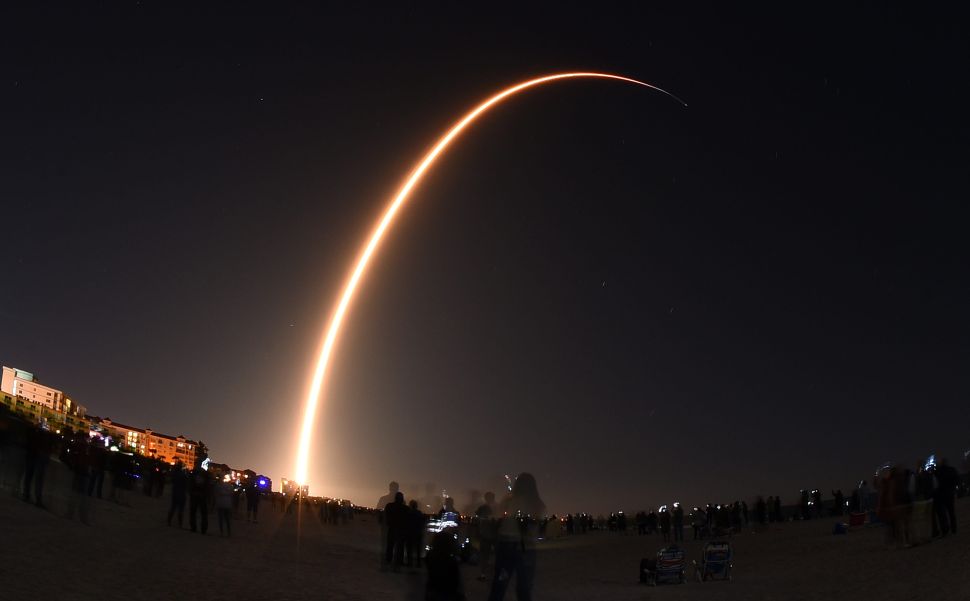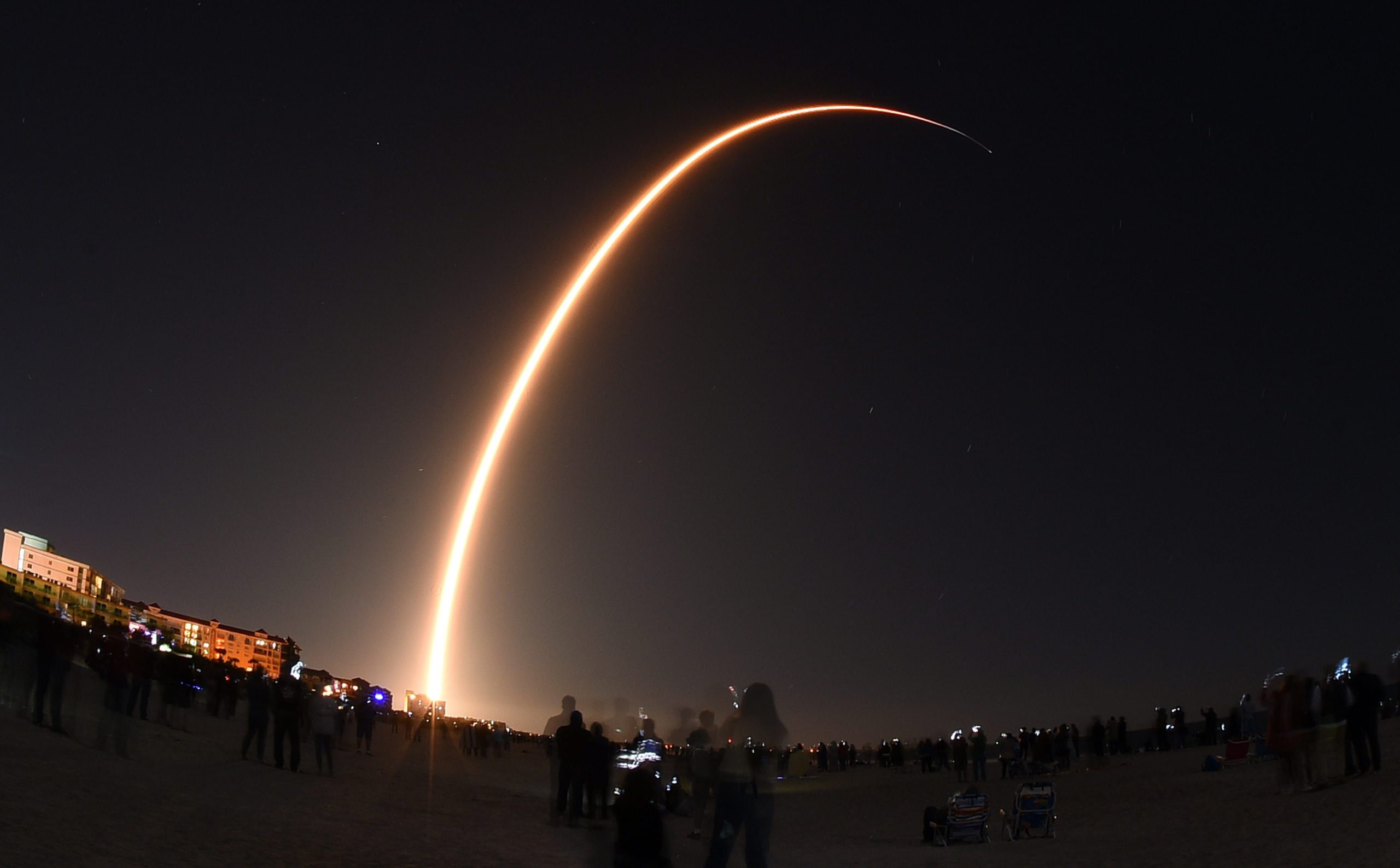
A SpaceX Falcon 9 rocket is noticed in this time exposure from Cocoa Seaside, Florida as it launches the company’s 3rd Starlink mission on January 6, 2020 from Cape Canaveral Air Pressure Station, Florida. Paul Hennessy/NurPhoto by means of Getty Visuals
SpaceX is scheduled to launch yet another batch of 60 Starlink satellites into orbit Wednesday at 2:59 pm ET from the Cape Canaveral House Pressure Station in Florida.
If nothing goes erroneous, this will be spaceX’s 100th consecutive profitable flight since June 2015, when a Falcon 9 rocket’s 2nd phase failed during a cargo provide mission to the Intercontinental Room Station.
You can check out stay coverage of the event on SpaceX’s webcast setting up 15 minutes just before liftoff.
SEE ALSO: SpaceX Rival OneWeb Options Future-Gen Constellation That’s Superior Than Starlink
Wednesday’s mission is the 13th Starlink start in 2021 so far and the 16th SpaceX flight this yr. The Elon Musk-led company has been sending batches of Starlink satellites into very low Earth orbit every single 10 times on regular, a document pace that’s increasingly worrying to its house market friends.
On Friday, the satellite operator Viasat formally questioned the Federal Communications Fee to halt SpaceX from launching more Starlink satellites as it heads to a federal courtroom to force for a thorough environmental evaluation of the mega-constellation challenge.
A earlier FCC license authorized SpaceX to start 1,584 Starlink satellites to the 550-kilometer orbital zone. By the conclude of April, SpaceX was close to meeting that restrict. So, on April 27, the FCC accredited a SpaceX application to modify the license to allow the enterprise to start more satellites. SpaceX exceeded the first 1,584 limit just after launching a batch of 60 Starlink satellites on Could 15.
The modification didn’t transform the total number of Starlink satellites permitted by the FCC in lower Earth orbit. The company originally authorized 4,409 Starlink satellites, like 2,825 in the orbital zone involving 1,100 and 1,300 kilometers and 1,584 satellites at the 550-kilometer zone. The new license minimized the range of satellites permitted in the greater orbits and moved individuals to the lower orbit. SpaceX has said operating Starlink in lessen orbits helps reduce latency between satellites and floor stations, thus bettering network performance.
Viasat is asking the FCC to pause further Starlink launches till federal courts can assessment the license modification. Viasat, which presents broadband providers from geostationary orbit (GEO), experienced petitioned the FCC to perform an environmental evaluate on the speedily escalating Starlink constellation beneath the National Environmental Coverage Act (NEPA).
The FCC has not initiated this kind of a evaluate, arguing that environmental evaluation is part of the Federal Aviation Administration’s obligation when it problems flight licenses.

